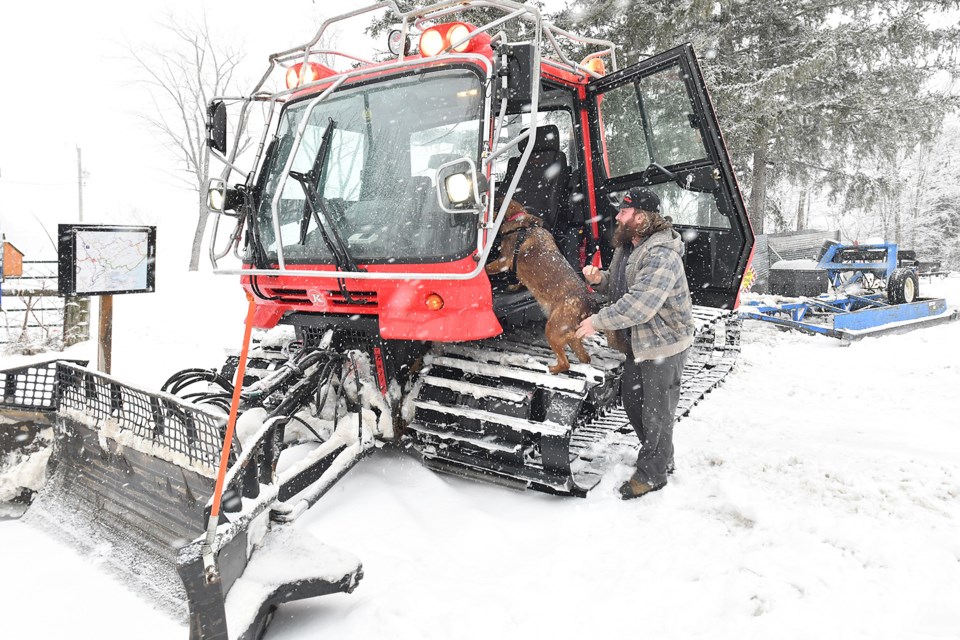More of the white stuff bodes well for area sledders. But more snowy blasts by Mother Nature are still needed to get trails up to snuff and give trail groomers the snow they need to work with.
Prior to the inception of the Ontario Federation of Snowmobile Clubs in 1967, snowmobile clubs across the province operated independently from one another as the sport began to grow and grow.
As the future of the sport was getting brighter, local riders came together to form the Sno Voyageurs Snowmobile Club, which will be a half-century old next year.
Over the decades, and with an ever-increasing number of riders on the trails, members have laboured to keep those trails groomed for sledders — and an appreciative dog-walking community, too.
Methods to achieve that perfect riding surface have changed over the years, club president Dave Emms says. In the early days, it was pretty much a do-it-yourself scenario.
“The trails were getting rough and unenjoyable and then people thought, ‘Maybe we can drag something behind our snowmobiles (to make it smoother)’,” he says. "There were different sorts of contraptions of skids and bedsprings that were made to be pulled behind a variety of different snowmobiles. There were lots of things like that.
“Alpine snowmobiles, which had one ski in the front and two tracks in the back, were also quite commonly used. Those were kind of the first attempts at grooming. Not that it didn’t work, but it wasn’t really efficient.”
Now there are different companies that make different styles of grooming implements, Emms says.
“The Bombardier Skidozer 252 was probably one of the most popular grooming machines that came along in the ’70s, but there was still no implement to drag the trail with,” he says. “But at that point in time, because all of the stuff around the growing snowmobiling industry was sort of evolving on the fly, the machines were there because they’d already been designed for alpine use.
“But the grooming drag really hadn’t been in production. It was really (sledders) that used their ingenuity and tried to build something they thought they could pull along and try to level the trail.
“A lot of the people who were in the club had construction experience or army experience so they went to work trying to figure out what would work. They really paved the way 50 years ago with their ingenuity for the manufacturers of today, who built off the ideas that people in the clubs came up with.”
Emms says the Sno Voyageurs Snowmobile Club has seen many new members in recent years and that riders of all levels of experience need to exercise caution when they hit the trails, and check current conditions at the Ontario Federation of Snowmobile Clubs’ website before heading out.
“Always stay on the designated OFSC trail and never ride a closed trail,” he says. “And please, respect landowners’ rights and property.”
